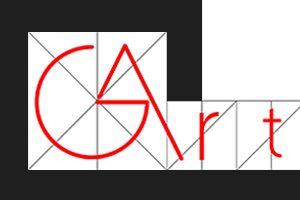Claudio Costa
About
Claudio Costa was born in Tirana (Albania) in 1942. Raised in Liguria, in Chiavari, in 1960 he moved to Milan where he studied architecture at the Polytechnic. In Paris in 1964, thanks to a scholarship won with his chalcographic works, he met Marcel Duchamp.
He made his debut in the early sixties with drawings and paintings between Informal and Pop Art to arrive in 1968, to a research between Arte Povera and Conceptual Art. In 1969 he obtained his first solo show at the La Bertesca Gallery in Genoa. His travels to Africa and New Zealand make him interested in working on primitive cultures. The research on man and his roots soon moved from the individual to the species, giving rise to the so-called anthropological phase of his work that addresses the remote past of prehistory and the reconstruction in cast of tools and the appearance of man. In 1975, together with Aurelio Caminati, he organized the Museum of Active Anthropology of Montegrifo. It is a house where he recovers, catalogs using the languages of the places and exhibiting all those objects that serve to reconstruct individual and collective memory. In the eighties the so-called alchemical phase begins, characterized by a visionary and surreal figuration and a return to painting and color (these are the years of the Transavantgarde). In 1986 he exhibited at the Venice Biennale with the work entitled Diva Bottle in the “Art and Alchemy” section curated by Arturo Schwarz.
Also since the mid-1980s he has worked in a large atelier in Genoa Quarto in the former psychiatric hospital where his research does not prevent him from interacting with patients as an art-therapist. His intuition led him to found in 1988 the Institute for Unconscious Matters and Forms which will become the Active Museum of Unconscious Forms, a space in which the works of professional artists and those of patients have no barriers. He died prematurely in Genoa in 1995.
The presence at the major exhibitions of the 1970s, such as Documenta in Kassel, highlight Costa’s role as a reference for the artists of the time. In particular, Claudio Costa works on the traces of the human presence, re-emerging from prehistoric times and which have come down to us in the form of cultural finds. In relation to them, the Genoese artist engages the processes of memory, of the shattering of language, in a research that must be read in relation to ready-mades, Italian poor art, American conceptual art, without neglecting an original reflection aimed at existential climate of international abstract expressionism.

#CLAUDIOCOSTA
- WEB


Via Gobetti, 114
65121 Pescara (IT)
Tel: +39 349 791 3885
Mail: info@gartgallery.it
C.F. / P. IVA 02303380683
Via Gobetti, 114
65121 Pescara (IT)
Tel:
+39 349 791 3885
Mail: info@gartgallery.it
C.F. / P. IVA 02303380683
Via Piero Gobetti, 114
65121 Pescara (Italy)
Tel: +39 349 791 3885
Mail: info@gartgallery.it
C.F. / P. IVA 02303380683
OPENING HOURS
Monday to Friday
from 5pm to 7.30pm
Saturday
from 10am to 1pm
from 4pm to 7pm
Open also by appointment
Monday to Friday
from 5pm to 7.30pm
Saturday
from 10am to 1pm
from 4pm to 7pm
Open also by appointment
NEWSLETTER
Sign up today to know about special events and more!
Sign up today to know about special events and more!

